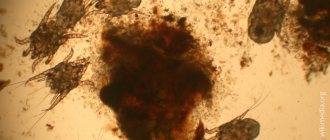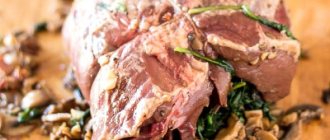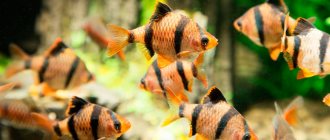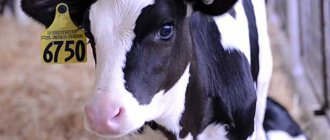Features of incubation of goslings
Incubation is a method of artificially breeding young geese in a special agricultural machine. The first feature of this type of production of goose offspring is that it also depends on many natural factors, which were influenced by the life activity of the adult bird.
- diet and composition of poultry feed during active egg laying;
- correct ratio of the number of males and females in the farm;
- regularity of walking geese;
- microclimatic conditions in the poultry house, etc.
After all, all this directly affects the formation and quality of eggs, from which chicks will subsequently be born in the incubator.
The second feature of incubating goslings is the influence of factors in the artificial environment and the incubation regime. Breeding chicks can occur in both homemade and industrial devices.
The hatchability of the goslings will depend on how the farmer organizes the life activity of the poultry on his farm, as well as how he creates the conditions in the incubator.
How to choose goose eggs for incubation?
To get healthy goose offspring, it is necessary to correctly select eggs for incubation.
To incubate goose eggs at home, you should use only those specimens that meet the following criteria:
- there are no spots or darkening in the white part when viewed through an ovoscope;
- during turning, the yolk can always return to its original location, which is also visible with the help of an ovoscope;
- the shell has a smooth surface;
- the yolk is always in the center, which an ovoscope will also help you find out;
- weight corresponds to the norm: 120-140 g (light breeds), 160-180 g (heavy breeds);
- dimensions range from 8-10 cm in length and 4-5 cm in width;
- having the correct shape;
- produced from geese aged 2-4 years, no more.
Goose egg compared to chicken and quail
All eggs whose sizes exceed these limits, i.e. small and too large, are classified as rejected.
Goose eggs are placed into the device only after a thorough check of the shell.
This surface examination aims to identify all cracks and other defects on the shell.
All defective units must also be discarded because the embryo cannot form in them.
When inspecting eggs before placing them in the device, it is recommended to use a special translucent device - an ovoscope.
Transillumination
The first candling is carried out after 9 days . With proper development of the embryo, you can see the circulatory system, but the embryo itself will not be noticeable. Often it sinks deep into the yolk. If the temperature regime is disturbed, then when examined, a developmental delay will be noticeable - the circulatory system will be pale and underdeveloped.
During the first inspection, all eggs with dead embryos must be removed from the incubator. Subsequent transillumination makes it clear exactly how the yolk is located, how mobile it is and what kind of air chamber it has. If the shell membranes are intact, and the condition of the white and yolk is normal, this will indicate the normal development of the gosling.
Storing and processing goose eggs before placing them in the hatching machine
Incubation of goose eggs at home requires a special regime for storing them before placing them in the incubator. After collection from geese, eggs should be placed on their side in an environment where the temperature does not exceed the range from 8 to 15 degrees.
Air humidity should be in the range from 75 to 80%. If the storage of goose eggs for further incubation lasted more than eight days, it is no longer rational to use them for the intended purposes. After a week, the eggs' ability to hatch chicks decreases significantly. These dynamics are shown in the table below:
| No. | Storage duration | Hatchability |
| 1 | 5 days | 79,8 % |
| 2 | 10 days | 72,7 % |
| 3 | 15 days | 53, 7 % |
| 4 | 20 days | 32,5 % |
| 5 | 25 days | 0 |
Experts in breeding geese at home advise turning eggs that are intended for further incubation, starting from the fifth day of storage.
And creative farmers have come up with another interesting way to preserve eggs: heating the goose product daily, for example, in the same incubator, for an hour and then returning it to the storage location.
What temperature should be maintained during temporary heating? It should be about 37.2 degrees, but no more.
This method in poultry farming practice is called “as in the nest.” It helps create the effect when the goose sits on the eggs in the nest to hatch them.
The next important point that requires detailed consideration is how to properly process eggs before placing them in the incubator. There are different opinions regarding the procedure for washing goose product.
Some farmers are inclined to think that washing them is not recommended. This may have a negative impact on hatchability. From this point of view, it is better to clean eggs of low and medium contamination with a soft brush and spray with disinfectant solutions (factory-made or home-made)
But if the shell is heavily soiled, you should still resort to this procedure. Because thoroughly cleaned and disinfected eggs must be sent to the incubator. They are washed using:
- persintama;
- hydrogen peroxide;
- dezoxona-1;
- potassium permanganate.
At home, prepare a solution of one of these substances in water (from 0.5 to 3%). The egg is lowered into a vessel with a solution for two to three minutes, after which it is rinsed and dried.
It is forbidden to wipe them with a rag or napkin, so as not to damage the protective shell. In this case, you need a solution temperature that is 5 degrees higher than the temperature of the goose product itself.
Once cleaned and disinfected, the eggs are ready to be hatched by the geese in the incubator.
Feeding newborns
In order for young goslings to get stronger, they need adequate nutrition. It is advisable to carry out the first feeding within the first hour after birth, this significantly increases the babies’ chances of survival.
The following foods are beneficial for hatched chicks:
- boiled eggs;
- finely chopped greens;
- oat groats.
Gradually, curd products are added to the diet of young animals. With the onset of warmer weather, it is advisable to release the babies to free grazing.
Geese destined for meat production are given special feed containing a lot of protein. Such food allows young animals to grow faster and gain live weight.
Rules for laying goose eggs in an incubator
The eggs are placed in the incubator in a horizontal position
Eggs are placed in the incubator in a horizontal position, marked with crosses and toes. This is done to make it easier to turn the eggs from one side to the other.
What temperature should the incubator be at the time the eggs are laid? The device must be preheated to an internal air temperature of 37.8-38.0 degrees and the goose product must be added at the same temperature. This helps prevent the embryo from sticking to the shell.
After the eggs are laid, the success of the process will depend on how correctly the incubation regime for goose eggs is maintained, namely:
- air temperature is regulated;
- proper humidity levels are maintained;
- Regular and timely turning of eggs.
In order for the incubation of goose eggs at home to be productive, it makes sense to consider the entire incubation process and its features step by step from A to Z.
Turning and spraying eggs
X – top, O – bottom
Incubating geese at home involves constantly turning the eggs in the incubator to ensure uniform heating at least 4 times a day.
In order not to get confused which way to turn the egg, it is supposed to be marked with different convenient symbols on both sides (for example, the symbols X and O).
This applies specifically to manual turning.
Modern industrial incubators are distinguished by an automatic tray rotation mode, for which the desired interval is set. A day before the goslings hatch in the device, the eggs stop turning.
For those who want to know how to hatch goslings in an incubator, it is important to take note of one more rule: regularly irrigate the incubated eggs.
You need to start spraying the eggs from the fifth day of being inside the device. For this purpose, a weak solution of potassium permanganate is most often used. Spraying helps cool goose eggs in the incubator.
From the 10th day, spraying is done twice a day, from the 20th - three times, from the 24th - four times. From the 28th day, irrigation stops and does not resume until the chicks appear.
Temperature readings in an incubator for goose eggs
The temperature in the incubator for goose eggs should be maintained at such a level that hypothermia does not occur during the first 15 days and overheating does not occur in the last days of incubation.
The key rules according to which the incubation temperature is maintained are the following principles:
- Warming up the incubator before laying to 37.8-38 degrees.
- Increasing the temperature in the first four hours to 39 degrees so that the eggs warm up to 37.7 degrees.
- Maintaining a temperature of 38 degrees for the first two days. It decreased from the third day to 37.8 degrees.
- A decrease in the indicator inside the incubator from the fifth day to 37.6 degrees.
- Decrease in temperature from the tenth day to 37.5 degrees.
- The indicator decreased on the 28th day to 37.3 degrees. It involves hatching goslings in an incubator at home.
The cooling process during incubation of goose eggs is vital. The eggs are quite large in size, the embryos warm up well and if the temperature regime is not observed, they can die from overheating. It is practiced to cool the eggs daily by turning off the device for half an hour to avoid sudden temperature changes.
Hatching of offspring
The hatchability of goslings is good. They hatch together. If the gosling cannot free itself from the shell within 24 hours, it should be helped. To do this, very carefully widen the existing hole, but do not break the egg. As soon as the hole is large enough, the chick will slip out of the shell on its own.
The goslings are immediately transferred from the incubator to a brooder or cage, where the temperature is maintained at a high temperature. As soon as the young animals dry out, they are fed.
Ventilation and air humidity in the incubator
The air humidity in incubators for hatching geese with your own hands, as well as in industrial-type devices, should be quite high. Initially, it is set at 70% and remains this way during the first week of incubation. From the 8th to the 27th day it may decrease slightly - up to 60%.
The hatching of goslings in an incubator at home must be carried out at high humidity - from the 28th day it rises to 90% and remains at this level until the final completion of the incubation cycle.
This is extremely important because the shells of goose eggs are very thick and hard. It is difficult for the chick to peck at it. And high humidity softens it somewhat, making it easier for the chick to get out of it. Ventilation must always be open.
Below is a table for incubating goose eggs, which reflects the indicators of comfortable temperature and humidity conditions:
| Incubation days | Air temperature | Air humidity |
| From 1st to 2nd | 38 °С | 70 % |
| From 3 to 4 | 37.8 ̊С | 70 % |
| From 5 to 9 | 37.6 ̊С | 70 % |
| From 10 to 27 | 37.5 ̊С | 60 % |
| From 28 to 30 | 37.3 ̊С | 90 % |
Hatching goslings in an incubator
Goose hatching
The incubation period for goose eggs takes a total of 30 days. If we determine on what day the first signs of hatching of goslings occur, we can confidently talk about the 29th day. In this time interval, shell pecks can be seen.
When it comes to the question of what day the mass hatching of chicks begins, all farmers agree on the answer: on the 30th day of incubation. If we talk about how many days hatching ends, practice shows that the whole process can sometimes stretch up to 32 days.
One of the reasons for the protracted hatching process may be problems with goslings getting out from under the shell. In this case, very careful, careful mechanical influence of the farmer himself may be required.
You should examine questionable eggs through an ovoscope, determine the location of the beaks, and make holes in the shell in these areas so that the chicks can continue to act on their own.
How long will it take for the chicks to hatch?
You can often hear the question of how many days to raise goslings at home. It is usually asked by novice poultry farmers. The period is individual for each case. But on average, they appear no earlier than after 28 days and no later than after 31. The chicks from small eggs are the first to crack the shell, and then the rest. If problems arise with incubation and one of the babies cannot emerge into the world on their own, human intervention will be required. You need to start helping within a day from the beginning of biting.
Typical mistakes of new farmers
Poultry farmers who do not have experience and sufficient knowledge of how to hatch goslings in an incubator often make mistakes that lead to the death of goose offspring and poor hatchability results. They violate a number of rules, which, on the contrary, are extremely important to adhere to so that the geese do not get hurt.
The reasons why newbies have low hatchability rates are:
- Sudden temperature changes. They can lead to both overheating of eggs and hypothermia. The result is the death of the embryos. If there is a threat of power outages, you need to take care of purchasing a generator. Rule: you cannot change the temperature suddenly.
- A frivolous attitude towards humidity indicators, an unwillingness to monitor it and regulate it within the required limits. Rule: humidity should always be increased/decreased on time.
- Wanting to control the hatching of goslings in an incubator, inexperienced poultry keepers may often open the incubator and look inside. The result is hypothermia of the sample and the death of the chicks. Rule: minimal mechanical interference in the process of birth of offspring (only if absolutely necessary to help the chick get out of its shell).
- Trying to save on resource consumption, some beginners resort to turning off or dimming the lights in the incubator. The result is the freezing of the embryos. Rule: breeding goslings in an incubator must be accompanied by a stable lighting regime. It is strictly forbidden to turn off the light or change its mode.
- Beginning poultry keepers, trying to see their first brood as quickly as possible, may take the chicks out of the incubator too early, long before they are completely dry. The result is hypothermia and death of the newborn chick. Rule: hatching goslings in an incubator requires them to remain inside the device until completely dry.
The process of incubating eggs requires special attention from poultry farmers. It can be performed both in home-made incubators and in production devices.
Factory machines provide ample opportunities for adjusting the microclimate inside, which is of key importance for the hatchability and survival of chicks. Creating favorable conditions for eggs is the key to obtaining healthy goose offspring.
Preparation
If there are cracked ones, they should be set aside as they are not suitable for incubation. With dried droppings, you should clean them with a brush or soft paper, as shown in the photo. If possible, it is advisable to ferment the eggs on both sides for 5 minutes.
For successful incubation, you must adhere to the following rules:
- Place horizontally in the tray;
- Maintain the correct temperature and humidity;
- Turn in time;
- Constant cooling.











